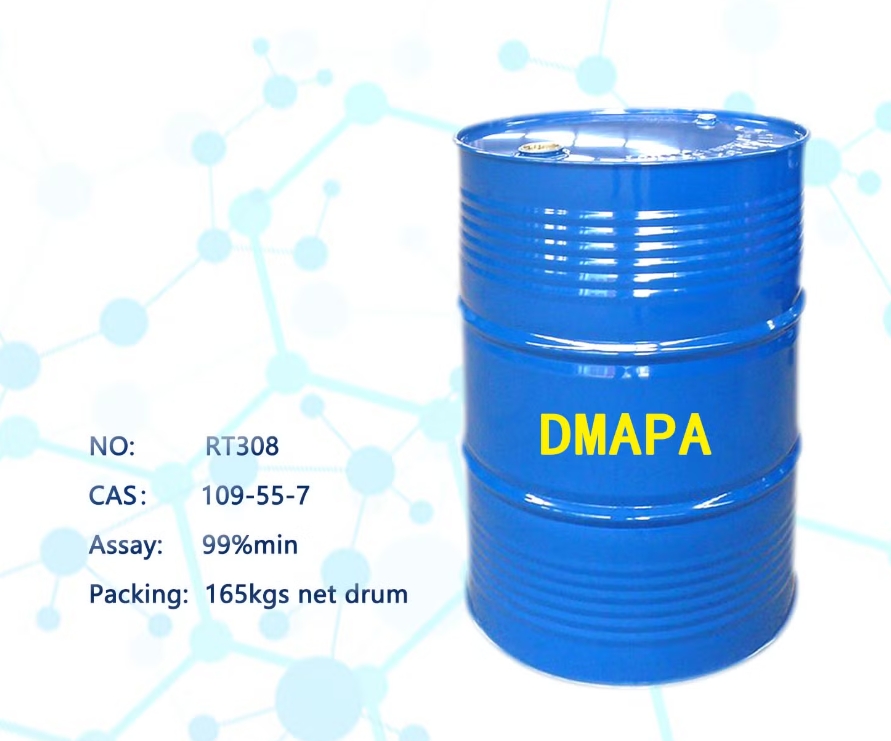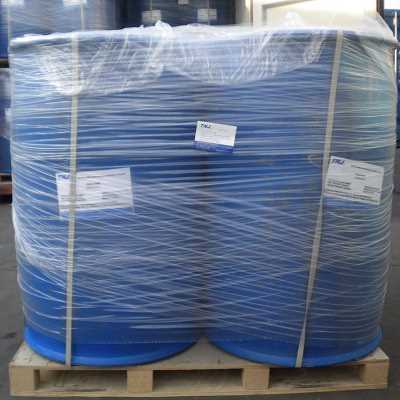1. Chemical Structure and Properties
Molecular Formula: C₅H₁₄N₂
Structural Formula: (CH₃)₂N-CH₂CH₂CH₂-NH₂
Physical Properties:
Appearance: Colorless to pale yellow liquid with an ammonia-like odor.
Boiling Point: 168–170°C; Density: ~0.89 g/cm³ (liquid)
Solubility: Miscible with water and alcohols (e.g., ethanol), partially soluble in hydrocarbons.
Chemical Properties:
Strongly alkaline (pKa ~10.5), reactive due to primary amine (-NH₂) and tertiary dimethylamino (-N(CH₃)₂) groups.
Participates in alkylation, acylation, and condensation reactions.
2. Industrial Applications
Surfactant Synthesis: Key precursor for cationic surfactants (e.g., stearamidopropyl dimethylamine), widely used in fabric softeners and hair conditioners for antistatic and smoothing effects.
Personal Care Products: Functions as a pH adjuster and emulsifier in shampoos, lotions, and skincare formulations to enhance stability and mildness.
Epoxy Resin Curing: Acts as a low-temperature curing agent for epoxy resins in adhesives, coatings, and composite materials, reducing curing time to 2–4 hours.
Pharmaceutical Intermediates: Critical in synthesizing antibiotics (e.g., quinolones) and antihistamines (e.g., loratadine).
Agrochemicals: Used to produce emulsifiers and dispersants for pesticides and herbicides.
3. Safety and Toxicology
Health Hazards: Causes severe skin and eye irritation or chemical burns. Vapors may irritate the respiratory tract, causing symptoms such as coughing and dizziness. Ingestion may lead to corrosive damage to the digestive system.
Fire and Explosion Risks: Flammable liquid (flash point ~60°C). Incompatible with strong oxidizers and acids due to risk of violent reactions.
Protective Measures: Use nitrile gloves, goggles, and appropriate respirators. Store in sealed containers away from heat and ignition sources.
4. Environmental and Regulatory Considerations
Ecotoxicity: Toxic to aquatic life (LC50 for fish: 10–50 mg/L). Wastewater should be treated before discharge. Readily biodegradable under aerobic conditions.
Regulatory Compliance:
EU: REACH-registered; Safety Data Sheets (SDS) required.
USA: Regulated under OSHA Hazard Communication Standard (29 CFR 1910.1200).
Transport: Classified as UN 2735 (Corrosive Liquid, Class 8).
5. Case Studies: Application-Specific Insights
Hair Conditioners: DMAPA-derived surfactants reduce frizz by forming a cationic layer on hair fibers. Example: Cocamidopropyl dimethylamine in Pantene Pro-V formulations.
Epoxy Adhesives: DMAPA-cured resins exhibit enhanced flexibility, making them suitable for automotive bonding applications.
Pharmaceuticals: Serves as an intermediate in the synthesis of ciprofloxacin, contributing to the antibacterial activity of the quinolone core.



